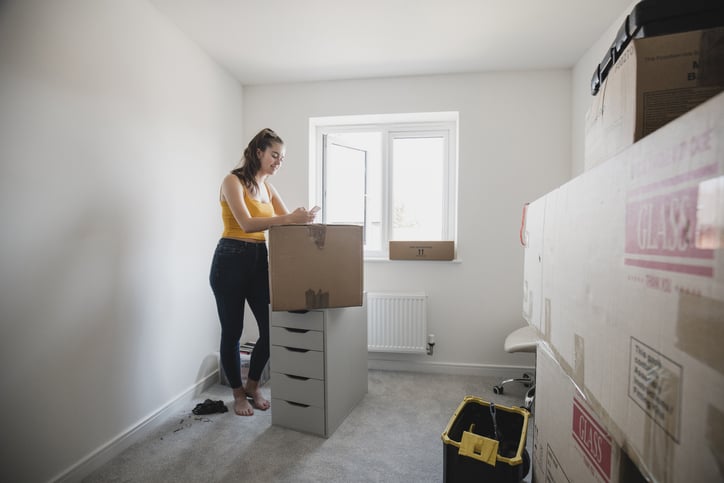
Every time you’re about to pack furniture with drawers, one important question that you will definitely ask yourself is, “Should I empty the drawers before packing the furniture?”
The best way to know whether or not you should empty the drawers before packing the furniture is to assess each furniture moving case individually. Here are some pointers that will help you decide what’s best for both your furniture item and for you as the furniture owner.
How strong a furniture piece will influence your decision whether to empty its drawers. If the furniture piece you’re moving is a high-quality one that’s built to last, then you may consider leaving the drawers full inside it. That’s usually the case when you’re moving furniture made of solid wood instead of pressed wood particles. It’s important to understand that the full drawers will add extra weight to the furniture structure, so you want to be sure that the unit will be able to bear that additional pressure during the move won’t prove to be too much.
Therefore, sturdy furniture with drawers should be able to survive a house move with its drawers full and well secured in place through several rounds of stretch wrap.
On the other hand, if you’re planning on packing and moving any ready-to-assemble furniture pieces (think IKEA) that look and feel rather flimsy and frail, then it’s a great idea to not only remove the contents of their drawers, but to pack and move those drawers separately from the main structure.
As a rule of thumb, chipboard furniture does not move well, so it’s debatable whether you should move any ready-to-assemble furniture at all. Also, it’s rather risky to leave the drawers full when moving antique furniture that’s both very old and very valuable.
Therefore, flimsy furniture with drawers will not usually survive the house move unscathed if the full drawers add extra stress to the structure. Do consider removing everything from the drawers, including taking out the drawers themselves.
If you’ve made up your mind to move without professional assistance but you’ve managed to secure the help of enough friendly helpers, then you may as well decide to leave the drawers inside the furniture unit in order to save time. By using enough manpower, you and your friends should be able to cope with the extra weight that the full drawers add.
More helpers on Moving day also ensures that the chances of property damage will be close to zero thanks to your joint ability to keep the furniture unit upright and to navigate it safely through small door openings and narrow hallways without any major risks.
Of course, when using professional moving services, the extra weight of the full drawers cannot possibly slow down experienced movers who have the required strength and use the proper moving equipment.
Therefore, having the right amount of manpower at your disposal is an indicator that drawers may not need to be removed and emptied beforehand.
If you don’t have enough helpers but you’re still determined to pull it off by yourself, then you should do whatever it takes to make things easier and safer for yourself. In that case, it’s important to keep your furniture with drawers as light as possible. And how do you do just that? It’s simple: you empty the drawers and pack their contents in moving boxes.
Therefore, you should empty those drawers before protecting the furniture for transport. After all, it’s no secret that lighter furniture pieces are easier and safer to handle during a house move.
Think about how the furniture item that has drawers will be handled throughout the move – will it be flipped sideways in order to fit through an opening or be carried upstairs or downstairs? Or will the unit be lifted, carried, and loaded into the moving truck almost entirely in an upright position?
You may be able to leave the drawers full as long as the furniture piece can be moved upright, without having to turn it sideways in order to pass through a small or tight place. Empty the drawers if you plan to flip the furniture unit sideways, especially when you’re going up or down stairs, or turning around a sharp turn.


